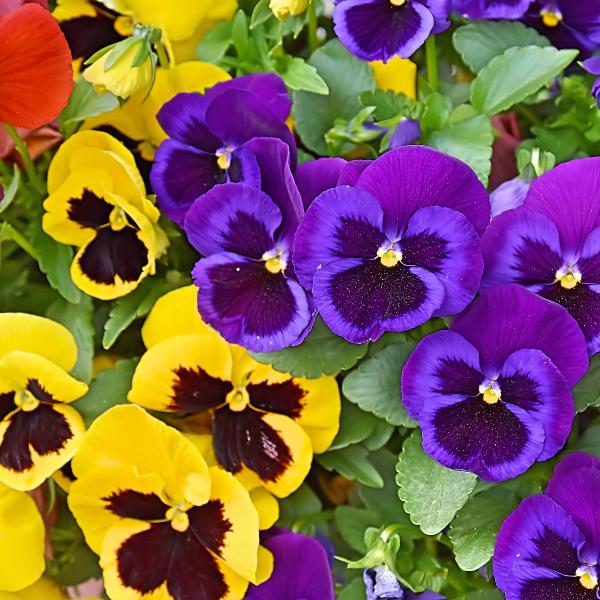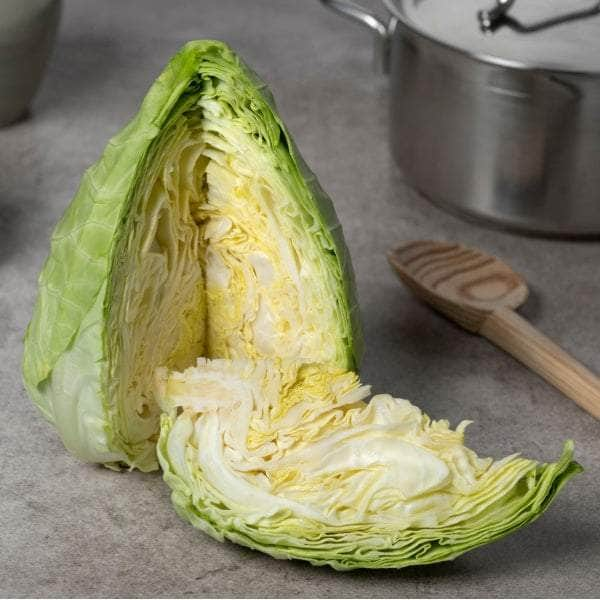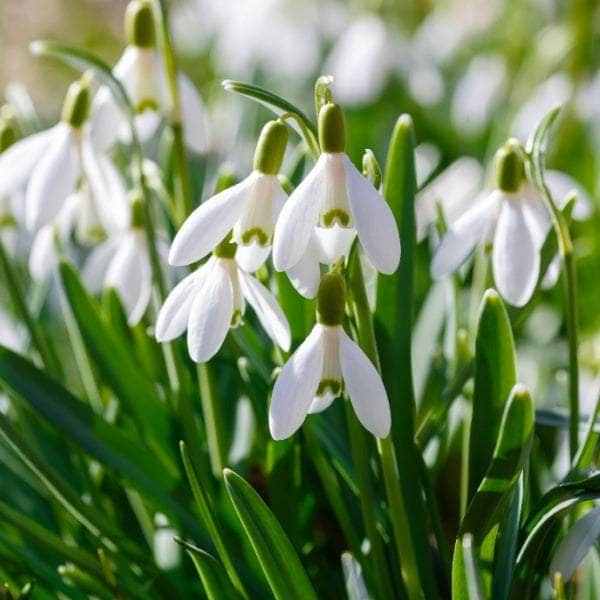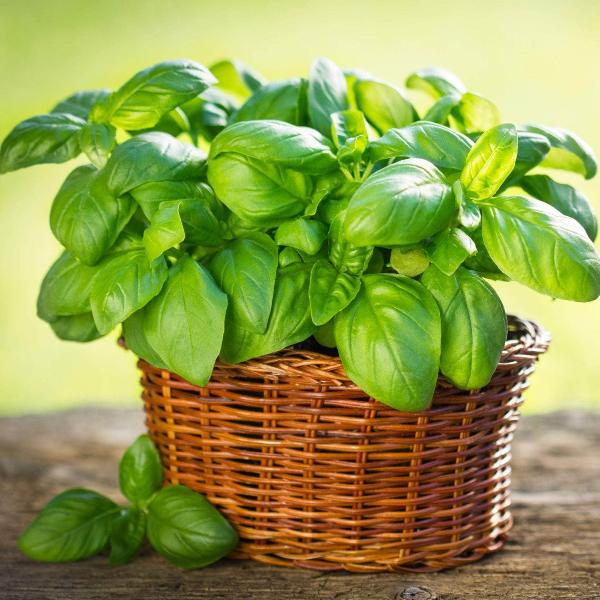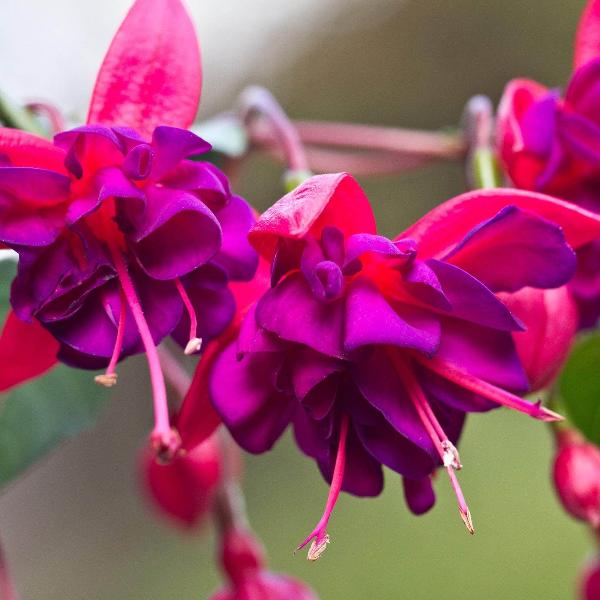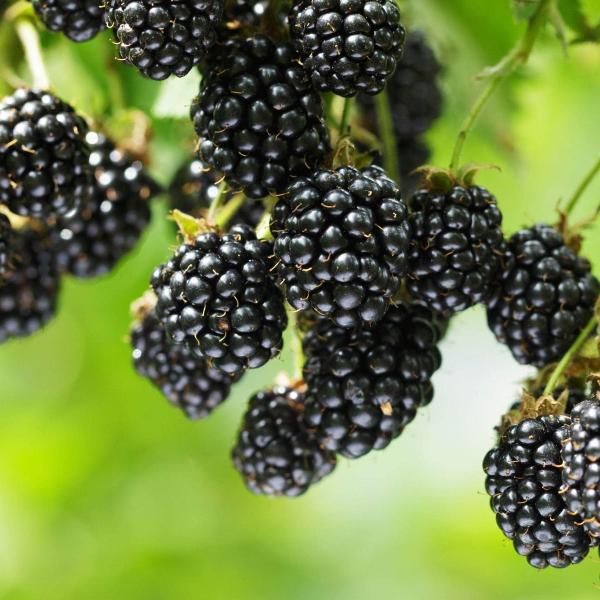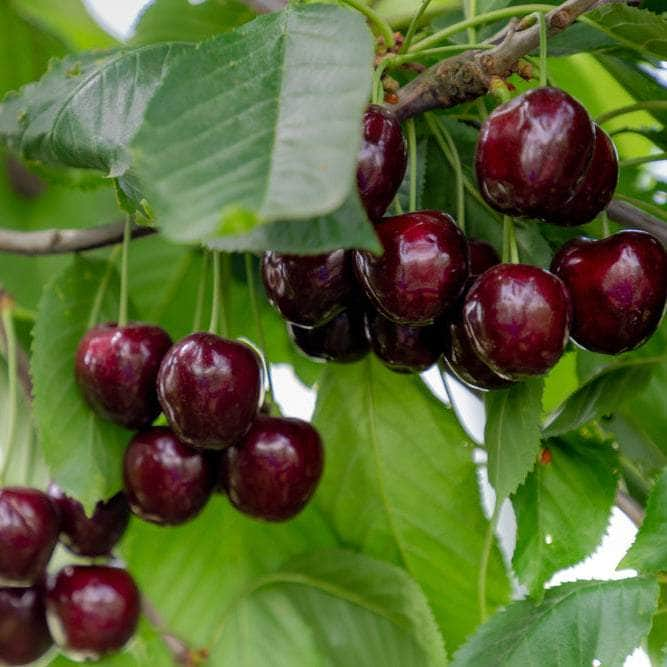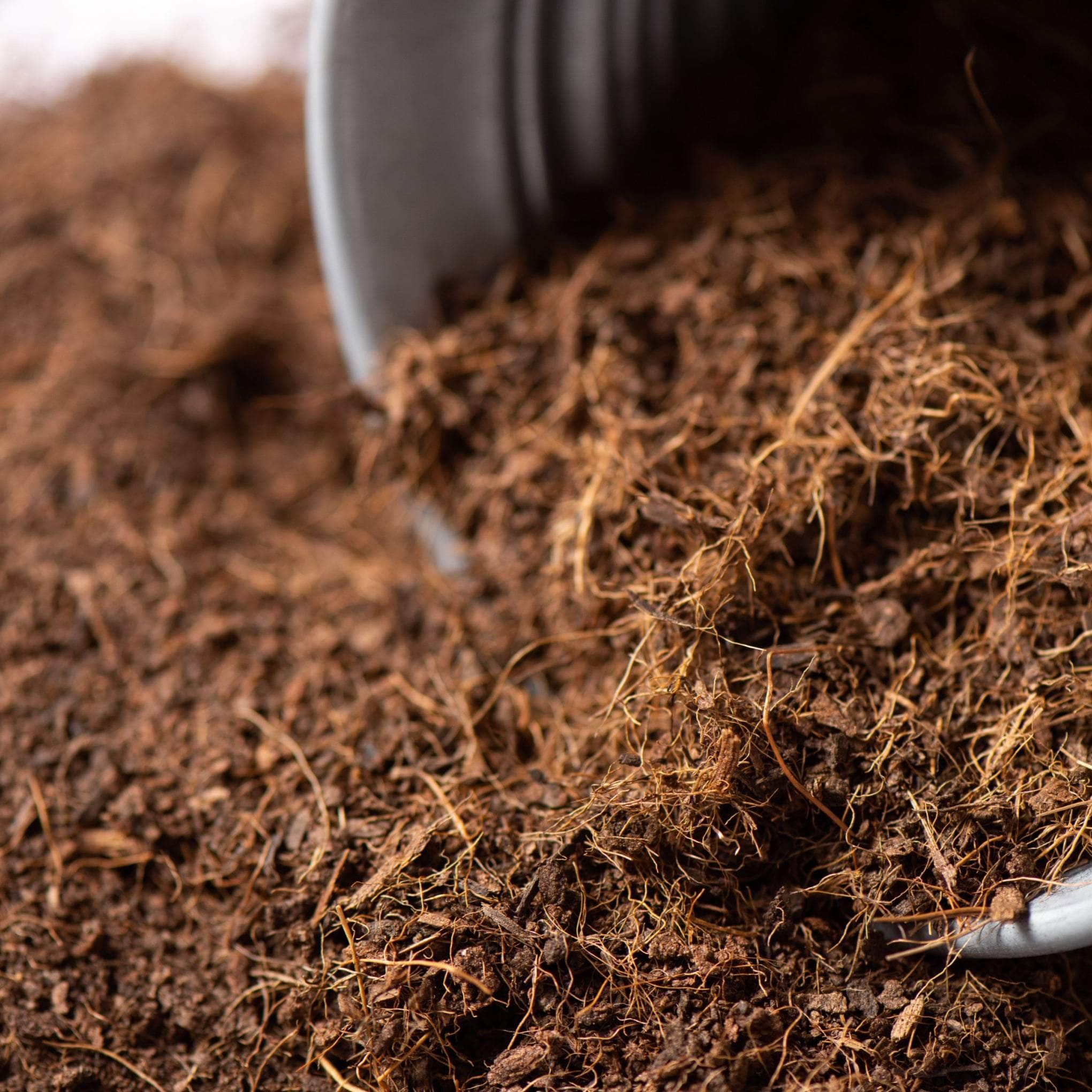The Complete Guide to Growing and Caring for Cyclamens

Welcome to our comprehensive guide on growing and caring for Cyclamens, a tuberous perennial that brings a burst of colour to your garden when little else is flowering. Whether you're a seasoned gardener or a green-fingered novice, our guide will help you understand the nuances of these captivating plants, from propagation to seasonal care, ensuring they thrive year after year.
Cyclamens are not just a pretty face; they're a plant for all seasons, providing winter interest with their vibrant blooms and unique foliage.
They're perfect for shade planting, nestled amongst annual bulbs and perennials, or as an indoor plant gracing your window ledge with their beauty. In this guide, we'll delve into the world of Cyclamens, exploring their types, ideal grow conditions, and how to approach their dormancy period.
We'll also share expert advice from master gardeners on how to combat common pests and diseases. So, whether you're planting in partial shade under a tree or preparing your indoor plant for dormancy, we've got you covered.
Let's embark on this gardening journey together, shall we?
Understanding Cyclamens: An Overview

Cyclamens are a captivating addition to any garden or indoor space, known for their vibrant colours and unique flower shapes. This section aims to provide an overview of these charming plants, delving into the different types of cyclamen and their key characteristics. Whether you're a seasoned gardener or a novice plant enthusiast, understanding cyclamens can help you make the right cultivar selection and care for these tuberous perennials effectively.
From their distinctive heart-shaped leaves to their nodding flowers with upturned petals, cyclamens are a feast for the eyes. But there's more to these plants than meets the eye. Let's embark on a journey to understand cyclamens in all their glory.
Types of Cyclamens
The Cyclamen persicum, a tender plant, often bought as an houseplant due to its intolerance to frost. Embraced mainly in England, Germany, and the Netherlands, this variant has spurred multiple cultivars enhancing its petal form and expanding its colour range.
Across Australia, the Cyclamen persicum is a popular choice producing large flowers during the winter. The Cyclamen hederifolium, proves to be a tough competitor, often found in garden beds and rockeries, prolific under deciduous trees.
For those who enjoy fragrances, varieties of Cyclamen persicum with miniature types, maintain standard leaf size but boasts tiny, subtly scented flowers.
Offering bi-colour options, the Cyclamen persicum cultivars with a white edge on petals (picotee), stripes, or ruffled edges stand out as unique options.
Identifying Cyclamens: Key Characteristics
Cyclamen's charm lies equally in their exquisite flowers and their uniquely patterned foliage. A quintessential tuberous perennial, cyclamen showcases an array of key features that assist in their identification, distinguishing them from other plant species. It's a plant known to present its best show during the winter months and the lull of cooler climatic conditions.
Regarded for their attractive heart-shaped leaves, the features that command attention are the remarkable staining and marbling patterns found in shades of white or silver. The foliage stands firm and erect, a popular characteristic among plant lovers. Another focal point is the diversity in leaf edges observed among cultivar selections. These can range from slightly toothed to lobed margins, with a purplish underside appearing in some types of cyclamen.
A worthwhile mention are cyclamen flowers that typically appear suspended above the lush foliage on slender stems. Their reflexed and twisted petals give the appearance of butterflies in flight, creating an aesthetically pleasing appeal. These petals converge into a short tube at the base of the flower, with the colour spectrum spanning from pure whites to varying shades of pink and red. A unique characteristic for identification is found in the variety of forms cyclamen flowers take, from double blooms to those with picotee, stripes, or ruffled edges.
Interestingly, miniature cyclamen types are treated with a light scent, notwithstanding the standard size leaves and tiny flowers. This trait does not just add to their ornamental value but also makes them easily distinguishable.
While the vibrant array of types of cyclamen and their characteristic features may make choice difficult, the key lies in understanding and appreciating their unique characteristics. Happy identifying!
Where to Grow Cyclamens

Choosing the right location for your cyclamen, whether indoors or outdoors, is a crucial step in ensuring its healthy growth and vibrant bloom. Cyclamens are versatile plants that can adapt to various environments, but they do have certain preferences that can significantly enhance their growth.
For outdoor planting, cyclamens thrive in sheltered places with partial shade, such as under tree canopies. They are hardy plants, typically suited to USDA hardiness zone 5, and can withstand cooler temperatures. However, they require well-drained, fertile soil to prevent tuber rot.
Indoor cyclamens, on the other hand, prefer cool, light-filled locations away from direct sunlight. They are tropical plants that require a specific temperature range to flourish. Careful attention to their needs, from the choice of pot to the temperature range, can ensure their healthy growth and stunning display of flowers.
Ideal Outdoor Locations for Cyclamens
Sheltered Places: Cyclamens thrive outdoors in locations that are sheltered from severe weather conditions, especially heavy rainfall. Therefore, consider planting them under tree canopies, where they will receive shelter as well as ample shade. The gardener who cultivates Cyclamens in these areas will witness them contribute an aesthetic appeal to their garden, creating a vibrant perennial garden shade.
Garden Shade: Cyclamens prefer to grow in partial shade. Hence, for those of you who are fortunate enough to have shade in your garden, using this feature to grow cyclamens can introduce a delightful splash of colour, injecting life into what might otherwise be a lifeless area. Furthermore, the Cyclamens' unique nodding flowers make for an interesting sight in the garden shade.
Hardiness Zone 5: Check your plant’s label to verify your hardiness zone – Cyclamens are typically hardy to USDA zone 5. This ideal hardiness zone enables Cyclamens to thrive even during the cooler months of the year.
While choosing an outdoor location to grow your Cyclamens, it's also important to assess and prepare the soil, which should be well-drained and fertile. Cyclamens require perfect drainage to avoid tuber rot. Working in compost and manures before planting can enhance the fertility of the soil. This, coupled with ideal location selection, sets your Cyclamen plant off to a great start, promising a successful and stunning yield.
Therefore, whether you confine your gardening to a small space or you manage a large landscape, Cyclamens can exert their charm, provided their basic needs of location and soil conditions are met.
Growing Cyclamens Indoors
Indoor cyclamen growing is a widely preferred practice as it adds a splash of charm to the household while also providing an uplifting gardening activity. The choice of indoor environment for cyclamen is critical, for these are tropical plants that thrive at temperatures above 40 degrees F (4°C). A sudden dip in temperature might not bode well for these delicate beauties, which do not tolerate anything below this threshold.
However, high temperatures are not exactly your indoor cyclamen's best friend either. Much like Goldilocks seeking the 'just right' porridge, these plants demand a precise temperature to flourish. High temperatures could lead to a rapid decline in the plant's health, causing the leaves to yellow and the flowers to fade swiftly.
Location is key here. Avoid the temptation to let it bask in a sunny window, as too much direct sunlight could trigger early dormancy. Your best bet should be cool, light-filled locations like east- and north-facing window ledges. This will ensure an optimal environment, conducive to your cyclamen's growth, potentially leading it to flower until as late as April.
Don't be tricked by the seemingly easy nature of indoor cyclamen growing. You'll need to provide ample care, beginning with the selection of a well-structured pot. Ideally, opt for bright, shiny pots but be mindful of the drainage system. Cyclamen despise soggy soil and thrive in good drainage conditions hence a pot with adequate drainage holes is essential.
So go on, bring home cyclamen from the nearest garden centre and enjoy the beautification of your interiors by these majestic indoor plants. But remember, right from the choice of pot to the precise temperature range, every care instruction is pivotal to ensure the happy growth of your cyclamens. And in return, the heart-shaped, marbled leaves amid bright coloured flowers will surely reciprocate your love and care.
How to Propagate Cyclamens

In the world of gardening, cyclamens hold a special place with their vibrant flowers and patterned foliage. However, propagating these beauties can be a bit tricky. This section will guide you through the process of propagating cyclamens, ensuring you can enjoy these stunning plants year after year.
Propagating Cyclamens from Tubers
When it comes to the propagation of cyclamens through tubers, the process could be challenging at times. However, you can break this down into manageable steps, ensuring a higher success rate. It's vital to understand that the tubers are the swollen, usually underground, parts of a stem or root used to store food by the plant. They possess buds that can give birth to new plants.
During the plant's dormancy in summer, extract the cyclamen from its pot and remove the stems.
Carefully inspect the tuber: break away the offsets developed from the main root. If no offsets can be seen, locate the growth eyes. Slice the tuber into pieces, with each section containing at least one growth eye.
Replant the tuber pieces immediately in a well-draining, peat-based growing mix. Each piece should stick out just a tad above the potting mix.
Moisten the potting mix and keep in a dry, shady spot. When autumn comes, move it to a brighter spot and start the weekly watering routine to stimulate new growth.
Just remember to be careful when handling the tubers, as cutting them might make them vulnerable to rot. The timing for planting the tuber should be when they are in root growth. You can determine the top and bottom of the tuber by noting the slightly concave side and flat side respectively. Plant tubers about 2.5cm (1in) deep and avoid going too deep as that might hamper flowering.
This method of propagation can require a little patience, but the derived sense of accomplishment and the eventual sprouting of new growth will make all the effort worthwhile. Remember, it's not about rushing the process but enjoying the journey of mastering your garden. Let your love for growing cyclamens guide you, and you'll soon be on your way to becoming a true master gardener.
Cyclamen Care: Light, Water, and Soil Requirements

In this section, we delve into the specifics of cyclamen care, focusing on the three key elements: light, water, and soil. Understanding these requirements is crucial to successfully growing and maintaining these beautiful plants. Whether you're a seasoned gardener or a beginner, these guidelines will help you provide the best care for your cyclamen, ensuring they thrive and bloom beautifully.
Cyclamens are known for their vibrant flowers and heart-shaped leaves, but they also have specific needs when it comes to their environment. They require a delicate balance of bright indirect light, a specific watering regime, and well-drained soil. Let's explore these requirements in detail to help you create the perfect grow conditions for your cyclamen.
Light Requirements for Cyclamens
Knowing the light requirements for cyclamens is central to helping this winter treasure thrive. While they are adaptable, their preference lies towards bright indirect light, making them ideal for east-facing windows.
Don't be too quick to shelve your cyclamen when winter concludes. These plants can fare well in southern exposures during the cold months in regions like Wisconsin, where sunlight is not as robust.
However, it's pivotal not to mistake the need for light for tolerance for heat. Cyclamens may be fooled into early dormancy by excessive heat from direct sunlight exposure, shortening their flowering period. The key is to maintain cool conditions even while providing the requisite light, a balance act that may entail shifting your cyclamen into prominence to soak up the light and back to cooler spaces when necessary.
In the colder months, situate your cyclamen near south-facing windows. This location provides the plant with the indirect light it needs without the risk of direct sunlight exposure that can lead to precocious dormancy. Remember, the overarching goal when caring for cyclamen is creating the right grow conditions that mimic its original environment.
Watering Regime for Cyclamens
When it comes to cyclamen care, water plays a significant role, closely interlinked with their overall health and growth. The watering regime for cyclamens must strike a careful balance: it should be enough to ensure a moist environment, yet not so much as to lead to excess water, which can result in a host of problems including fungal diseases.
Cyclamens prefer the top third of the pot soil to go dry before the next watering session. It's critical to avoid any water contact with the leaves or crown of the plant, as that could lead to rotting. Watering from above is therefore discouraged; a more effective and safer method is watering at the base of the plant, soaking the soil thoroughly and allowing the excess water to drain. This can provide cyclamens with the consistent moisture they require without causing harm.
Cyclamens also have a dormant phase, which typically happens in summer when they lose most or all of its leaves. During this period, your watering frequency should decrease. It's essential to keep the soil from completely drying out, but also to avoid overwatering, as that could induce rotting.
One popular and effective method of watering cyclamens is via a tray. Simply place the pot on a tray and water the tray itself, allowing the moisture to be absorbed from beneath.
Seasonal Care for Cyclamens

Cyclamens are a gardener's delight, especially during the winter months when their vibrant blooms add a splash of colour to the otherwise bleak landscape. However, these charming plants require specific care throughout the year to thrive. This section will delve into the seasonal care for cyclamens, providing you with a comprehensive guide on how to nurture these plants during different seasons.
From preparing for dormancy in spring and summer to ensuring their vibrant bloom in autumn and winter, we'll cover it all. So, whether you're a seasoned gardener or a novice, this guide will equip you with the knowledge to keep your cyclamens healthy and blooming all year round.
Caring for Cyclamens in Spring and Summer
Prepare for dormancy- As we approach spring, Cyclamens start showing signs of dormancy. Gradually reduce watering and fertilisation as the plant's leaves start to fade and fall.
Store your plants- During summer, it's best to move your indoor Cyclamens outside, but make sure they don't stay too wet. This dormant season typically lasts around two months.
Mind the temperature- Remember to bring the Cyclamen plants back inside before the first frost hits. The tuber, from which the flowers and leaves grow should be stored in dry vermiculite at about 50ºF for 6-12 weeks.
Repot the tuber- After summer, repot the dormant tuber in well-draining soil mixture. Start watering again when you notice new leaves forming on the tuber.
Fertilise until buds form- Keep fertilising until you see flower buds form on the revitalised plant. Keep in mind, Cyclamen is a plant for winter interest in a gardener's calendar, as it provides a colourful display during the cold months.
Caring for Cyclamens in Autumn and Winter
Plant for winter interest: As Winter is the flowering season for cyclamens, it's essential to move your potted cyclamens to a location with plenty of bright indirect light.
Approach Dormancy your Cyclamen: Typically, a gardener can expect the dormancy period to commence in early to mid-spring. It's crucial to prepare cyclamens for dormancy once you start noticing signs such as yellowing leaves or finished flowers. Decrease watering to prevent the tuber from rotting.
Managing your Cyclamens during dormant period: During the dormancy phase, it's advisable to store cyclamen plants in a dry, shaded area. This helps keep it dry until the following autumn when new growth appears on top of the tuber.
Kick-starting new growth post dormancy: New growth reappears in autumn, signalling the right time to start watering and fertilising again. However, too much moisture can be harmful. Wait for leaves to start drooping and the potting mix to dry before watering again.
Regular maintenance and observation: Regularly observe and remove yellowing leaves or finished flowers by twisting the stem off at the base of the tuber. This approach prevents any rotting and potential issues. Also, ensure regular feeding of your cyclamens to maintain strong, healthy plants, vital for months of blossoming flowers, even in the cold winter months.
By following this gardener's calendar, you can ensure your cyclamens stay healthy and vibrant through autumn and winter. Remember, seasonal care is crucial for cyclamens, and your actions during this period can drastically influence their bloom and longevity.
Common Pests and Diseases in Cyclamens

Growing and caring for cyclamens can be a rewarding experience, but like all plants, they are susceptible to certain pests and diseases. In this section, we will delve into the common pests and diseases that can affect your cyclamen plants. Understanding these challenges is crucial to maintaining the health and vitality of your cyclamen, whether you're growing them in a container or directly in the ground.
The key to preventing these issues lies in the right watering regime, proper air circulation, and ensuring excess water drains from the base of the plant. Let's explore these pests and diseases in more detail, and learn how to identify and manage them effectively.
Identifying and Treating Common Cyclamen Pests
Aphids: These small, sap-sucking pests adore the greener parts of the plant. Aphids can cause the leaves to curl and wilt, discolour, and even stunt the growth of new leaves and flowers. Aphids can be managed by keeping the plant in good health, meaning not waterlogged and with proper air circulation. For severe infestations, consider using horticultural soap or sprays.
Mealybugs: Pocket-sized pests covered in white, waxy material, mealybugs dwell on the base of the plant, resulting in slow growth and yellowing leaves. Mealybugs can be eliminated by manually removing them followed by spraying the plant with diluted neem oil.
Mites: Predominantly spider mites, these minuscule creatures suck the life out of the plant by feeding on the sap from the underside of the leaves. Affected leaves may develop yellow spots and eventually fall off. Mites can be treated with a robust watering regime, ensuring all leaves are fully rinsed. An application of natural insecticidal soaps can also help.
Prevention is always better than cure. Keep your cyclamen in an adequately ventilated location, ensure regular but not excessive watering, and drain excess water to keep your plant healthy and less susceptible to these common pests.
Preventing and Managing Cyclamen Diseases
Managing and preventing cyclamen diseases requires keen observation and an understanding of the nuances of these plants' needs. Crucial factors that influence the health of cyclamen include the watering regime, air circulation, and making sure excess water drains well, especially when grown in containers. These practices can help prevent rotting and the development of diseases such as powdery mildew.
Overwatering or poor drainage: Overwatering cyclamens creates a conducive environment for the growth of fungus and rot. Yellowing leaves or collapsing flower stems are signs that you may be overwatering the plants. To manage this, always ensure the base of the plant is well-drained, and wait for the topsoil to dry out before watering again.
Poor air circulation: Poor airflow may cause powdery mildew, recognised as a white or light grey coating over the foliage. To prevent this, ensure your cyclamens have ample space and good ventilation.
Excess heat: Cyclamens don't fare well in overly warm conditions. Yellowing leaves or poor general health without rotting issues can be signs your plants are suffering from heat stress. In such cases, move the plant to a cooler room or rest it overnight in the colder outdoor air.
A healthy plant is the best defence against disease. Keep a close eye on your cyclamen for any off signs, and act quickly to mitigate the potential damage. Bringing vigilance and care into your gardening routine will yield healthy, vibrant cyclamen blooms.
Final Thoughts on Growing and Caring for Cyclamens

In conclusion, cyclamens are a delightful addition to any garden, providing vibrant colour and interest during the late winter and early spring when other plants may be dormant. Their unique characteristics and adaptability make them a favourite among both novice and master gardeners.
Remember, the key to successful cyclamen care lies in understanding their needs and providing the right grow conditions. This includes ensuring good air circulation, providing bright indirect light, and maintaining a consistent watering regime.
It's also crucial to respect their dormancy period and provide the right care during this time. While cyclamens may require a bit more attention than some other plant types, the reward of their beautiful blooms year after year is well worth the effort.
So, whether you're a seasoned gardener or just starting out, why not add some cyclamens to your garden this season?
You won't be disappointed.




